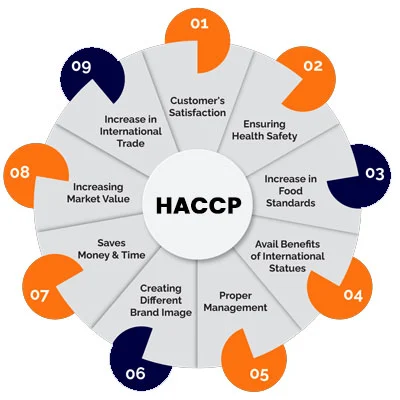- Company Profile
- Management Systems
- Product Compliance
- Corporate Training
- Gallery
- Clients
- News & Events
- Contact Us
HACCP is acronym to Hazard Analysis and Critical Control Points, which is at large a systematic preventive approach to food safety. Though it can be used at all segments in a food chain, it is better applied at a production stage to prevent biological, chemical and/or physical hazards that can cause the finished product to be unsafe, and helps in designing a framework to reduce these risks to a safe level. HACCP also extends its scope in cosmetic and pharmaceutical industries.
HACCP risk assessment is a crucial step in ensuring food safety by identifying and controlling potential hazards in your food production process. It’s based on the seven principles of HACCP outlined by the FDA:
